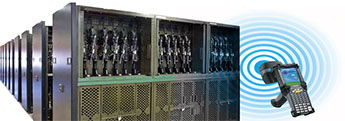
Armory Management & Weapons Accountability System

Armory Management & Weapons Accountability System
Radio Frequency (RFID) Weapons Tracking System
Executive Overview
The ARMS Armory Management system is optimized for Weapons / Gear Accountability, by tracking weapons, gear and defensive equipment using software screens, bar codes and / or RFID (Radio Frequency Identification) technologies. The software is fully developed, COTS (Commercial Off-the-Shelf) software, and is typically further customized according to each customer’s specific requirements. The ARMS rapid-application-development toolkit enables the software to be rapidly configured according to each customer’s preferred terminology (data fields), and to automate workflow and generate reports consistent with current or preferred operational practices.
In addition to tracking weapons and gear, ARMS provides software components to track weapons cleanings, inspections, maintenance, test firings and similar functions. ARMS also includes functionality to track and look-up weapons certifications, ‘Do Not Arm’ status, items-required-for-a-post, and similar database lookups during transfer and return processing.
A single database ‘instance’ of ARMS can be further configured to model and track a wide range of additional items, such as records, evidence, assets, people, vehicles or similar entities. The software is available hosted, or can be installed on local server(s), with cross-platform support for Windows and Linux environments. ARMS is scalable to unlimited item types, locations, users and records.
Software and Bar Code Tracking
ARMS includes a ‘Weapon/Gear Tracking Screen’ that enables staff to enter an item # by keyboard, or scan a bar code or RFID tag on an item (using a USB connected bar code or RFID scanner), to indicate an item that is being issued to personnel or returned to the armory. The armory, or the person to whom item(s) are being issued, can be entered by keyboard, selected from a drop-down list on the Tracking Screen, can be captured by scanning a bar code on an ID card/badge, or by scanning bar codes printed on sheet(s) of paper (each person/place is printed as a text field and is represented by a bar code on the sheets). As such, ARMS provides robust performance and trackingcapabilities, with minimal investment, using software screens and/or USB-connected scanning devices.
RFID (Radio Frequency Identification) Tracking
RFID Radio Frequency technology is the state-of-the-art in weapons tracking, and is achieved by placing special RFID tags within or on weapons and gear. The RFID tag # is linked to the Weapon or Item Serial # within the database. Staff can also be RFID-identified, by using RFID name badges issued to each authorized person (or RFID labels can be placed on existing name badges or name badge lanyards).
RFID antennas are placed around Armory issue-windows and/or doorways, and will passively detect each person and the item(s) passing into or out of the Armory, by saturating pass-through zones with radio waves {emitted by RFID antennas positioned around doorway(s) and/or issue-window(s)}. Motion sensors are placed on each side of the doorway or window, to establish directionality (Issue or Return), based on which sensor is first triggered. The sensors also turn on the RFID equipment, and the RFID antennas detect the items and/or people coming into or leaving the armory. The RFID data (item(s), person, RFID read-zone location) updates to the ARMS database and also logs the time and the date of the transaction. Flashing light stacks and alarms can be implemented as part of RFID implementations, and will trigger based on business rules (unauthorized access, unauthorized removal, failure to return an item, etc.).
After shift changes, and whenever otherwise appropriate, Portable RFID Scanners are typically used to rapidly inventory weapons and other gear, which uploads to the database and automatically generates inventory reports and inventory exceptions reports. Portable scanners can also be used to inventory items issued to posts or other non-armory locations. Additionally, portable RFID scanners enables specific or missing items to be found, by operating similar to a metal detector to guide Users to a specific item.
Representative Armory Outfitted with RFID Technology

Weapons Racks for Effcient Storage
RFID Antennas / Sensors around Doorway(s) for In / Out Tracking
Portal RFID Reader for Rapid Inventories
File Server for the ARMS Armory Management System software
RFID Doorway(s) and Issue Window(s) at Armory for Issue / Return Tracking
RFID antennas around doorways or issue windows track officers/staff, weapons and gear. Proximitysensors establish directionality…items being Issued versus Returned. RFID tags are placed in or on weapons and gear, and RFID name cards can be issued to staff. Each time a person enters or leaves the armory, the database is updated with the person and the items that they removed or the items that they returned. Electronic signatures can be captured from the person removing/being issued items, or the armorer upon item return, and the signature saves to chain-of-custody logs, and log can be printed and show all signatures validating weapon/gear transfers for proof of custody. Flashing light/alarm mechanisms can be placed in armory, and are triggered based on business rules, such as unauthorized removal, person forgot to return an item after shift change, etc. Cabinets are available for housing reader and wiring, and for mounting lightstack/alarm.

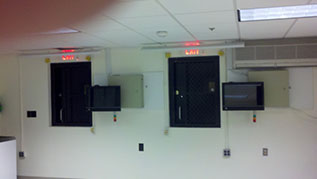

Issue Window or Doorway Monitoring System
When an officer presents for receipt of weapons and gear, they can be identified by fingerprint, ID Card or from a drop-down list of authorized recipients. The software will automatically lookup the items assigned to the recipient, and will validate that their certifications are current, and that the person has not been marked as ‘Do Not Arm’ status. If the person is being assigned to a Post, the Post can be selected from a drop- down list. All items assigned to the recipient and that are required for the post will display as photographs on a flat screen monitor. Any weapons that should not be issued due to status or certifications will be highlighted in RED. Any items previously issued to the recipient, but not returned, will be highlight in RED to create an Alert. The armorer will issue items through an issue-window, or arm-up the recipient in the Armory, and items issued will be tracked via RFID when the items pass through the Issue Window or when the recipient exits the Armory through a doorway. All items issued will display as photographs on a flat- screen monitor visible to the recipient and the armorer, and will be highlighted in GREEN. This enables validation transfer of custody, and the recipient can be required to sign an electronic signature pad to confirm receipt of the items issued.
When items are returned, each item will display on the flat-screen monitor for validation by the armorer and to transfer custody back to the armory. Any item issued to the recipient but not returned will display and highlight in RED. If appropriate, the armorer can be required to sign the electronic signature pad to accept custody of the items as returned-to-armory.
Example Weapon/Gear Transfer Screen
Example Photo Confirmation Display
Portable RFID/Bar Code Scanner for Inventories
Portable RFID/Bar Code Scanners provide many important benefits, including the ability to perform rapid inventories and to FIND missing/needed items. The scanner sends out radio waves that detect items from up to 20' away, so that all weapons and gear in the armory can be quickly inventoried and the location of the items updated in the database as 'in armory'. If an item is missing, the serial # can be entered into the scanner, and it will detect the item and then beep faster or slower based on proximity to the item, to guide the User right to the needed item. Additionally, the scanner supports bar codes, so that bar codes can be placed on shelfs, containers, etc. and the exact location of items can be identified (by scanning bar code) when they are placed into storage.

Placing Tags In or On Weapons
The ARMS system has been extensively tested using many varieties of tags for placement within or on weapons, as well as other gear and accessories. There are many styles of weapons tags and positions that the tags can be placed. Specially designed tags are available that are optimized for placement on a metal surface and/or for placement on composite surfaces. Tags are typically adhered within grips using epoxy with aggressive bonding properties, that ensure tags stay in place, even with the most rigorous usage. The Weapons/Gear tags and the epoxy withstand weapons firings, vibration, high/low temperatures, water, cleaning solvents, ultrasonics and typical weapons usage and cleaning processes.
For pistols, best results are typically achieved by placing a small RFID tag inside of the weapon handle, or within the handle cavity, which does not impede the magazine from sliding in or out. For long arms, best results are typically achieved by placing the tag within the grip, or along the exterior surface of the underside of the weapon. Example tags/tag placements are shown below:


Examples of Weapons and Gear Tracked by RFID
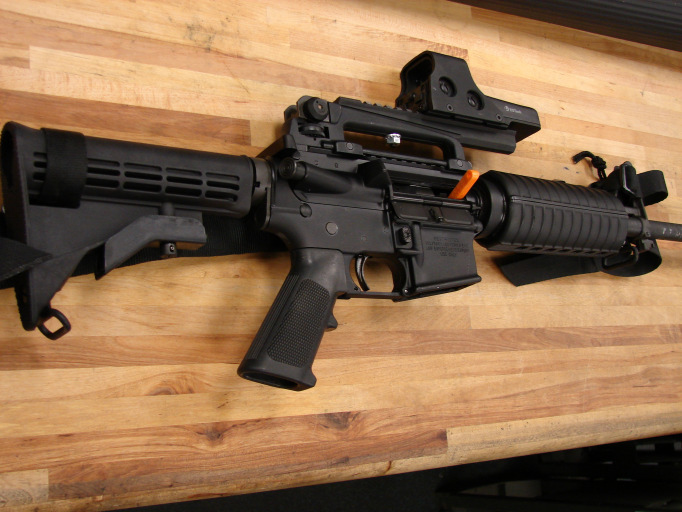 |
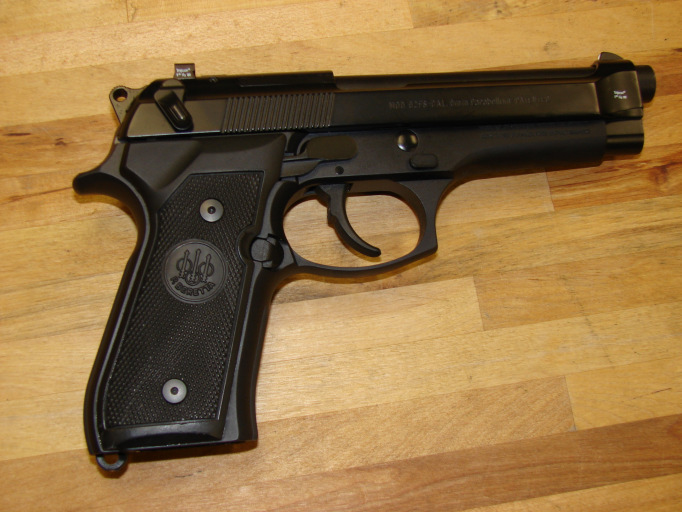 |
 |
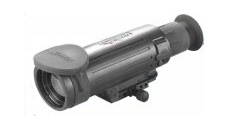 |
 |
 |
 |
 |
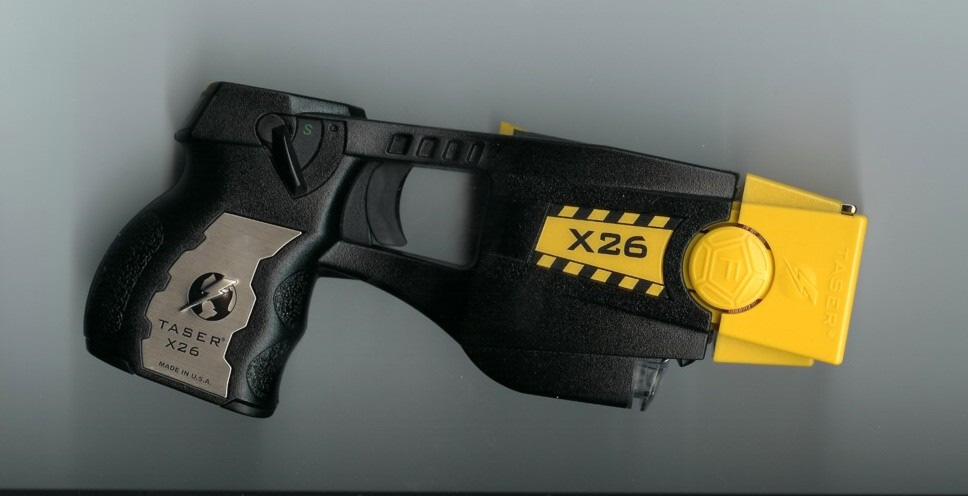 |
Example RFID ID Card

RFID Accountability – Item Tracking
The ARMS software is configurable to track unlimited item-types, using the same Server and database, enabling scalability over time with minimal investment. Software configurations are available for managing weapons, gear, inventory, records, assets, vehicles and many other items or classifications of people. Existing software applications can be utilized as-is by customers, or the software can be modified and customized according to each customer's requirements.
Weapons
|
Gear
|
Inventory
|
Assets
|




